
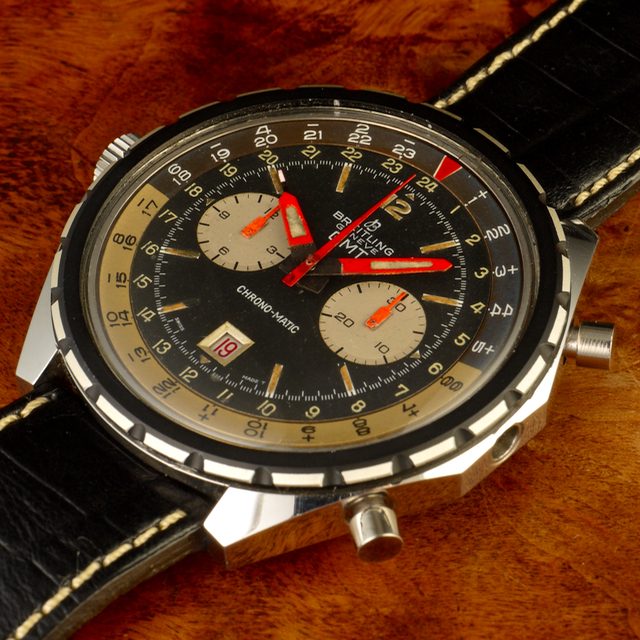
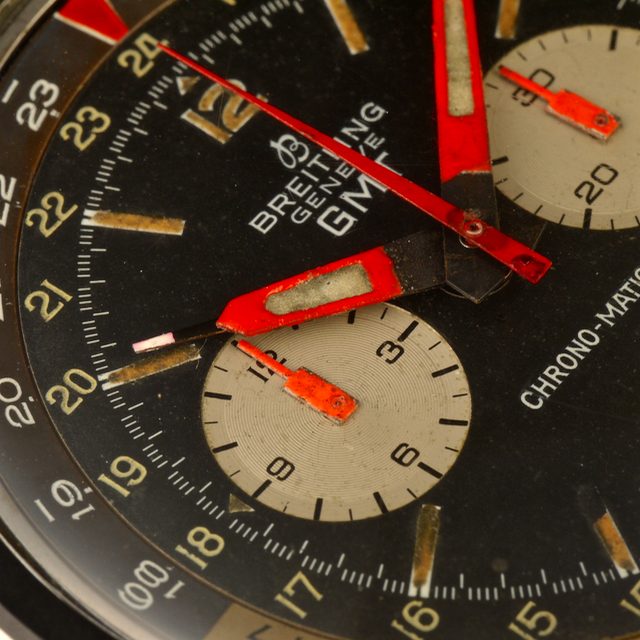
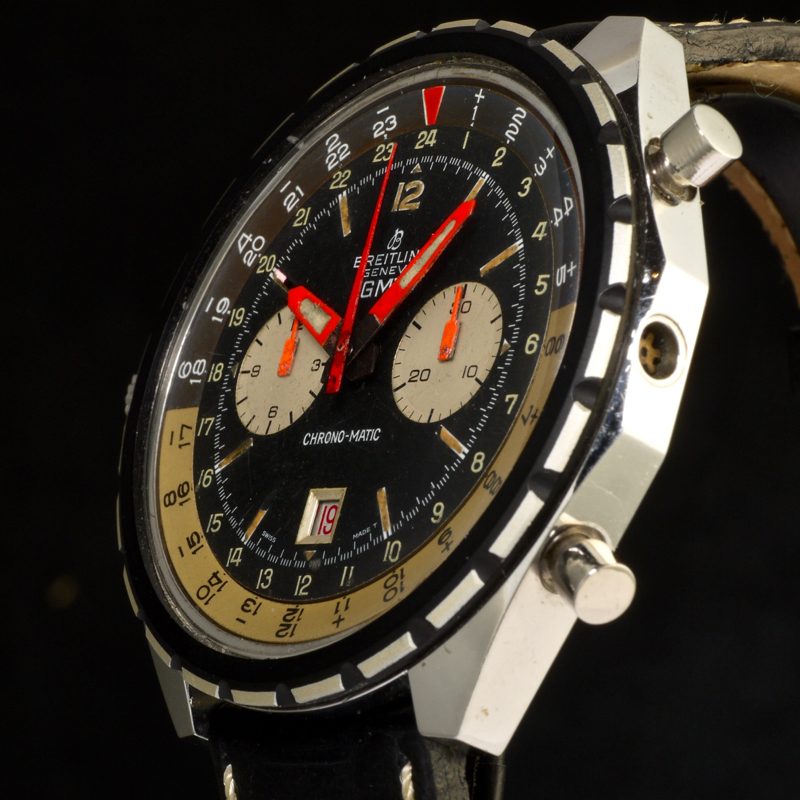
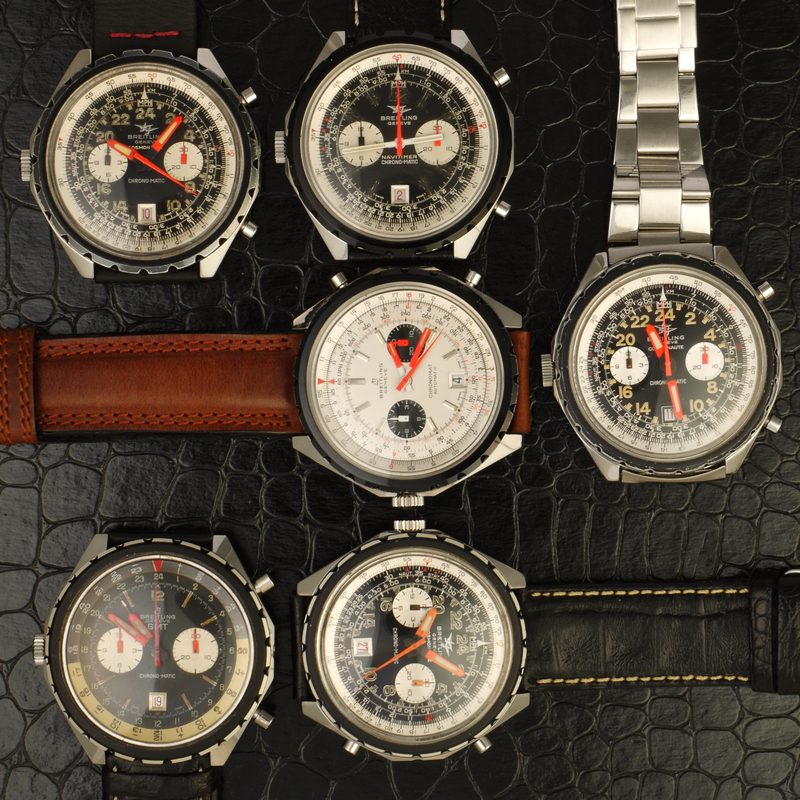
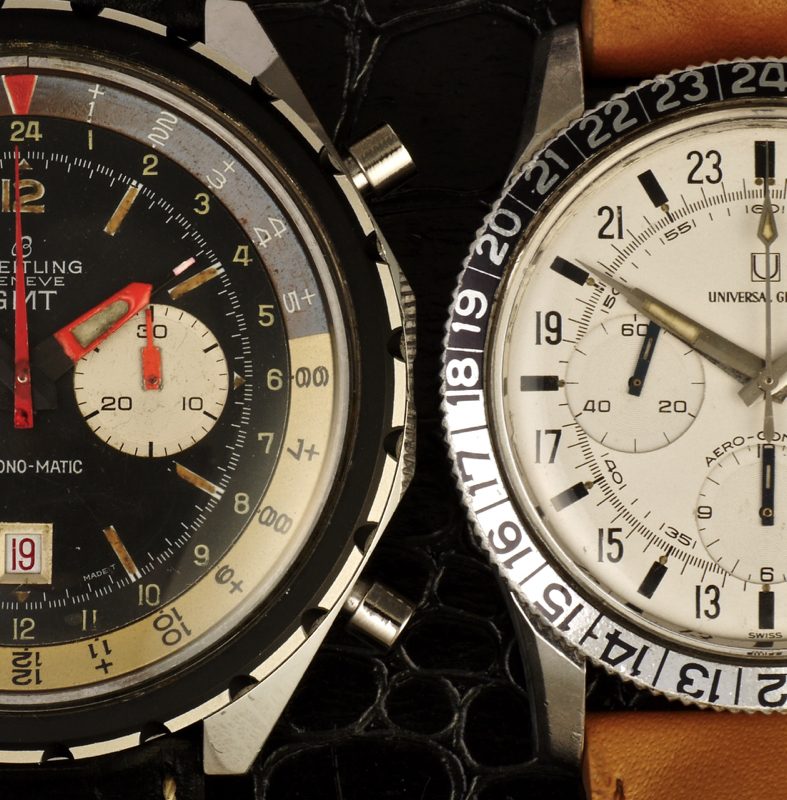
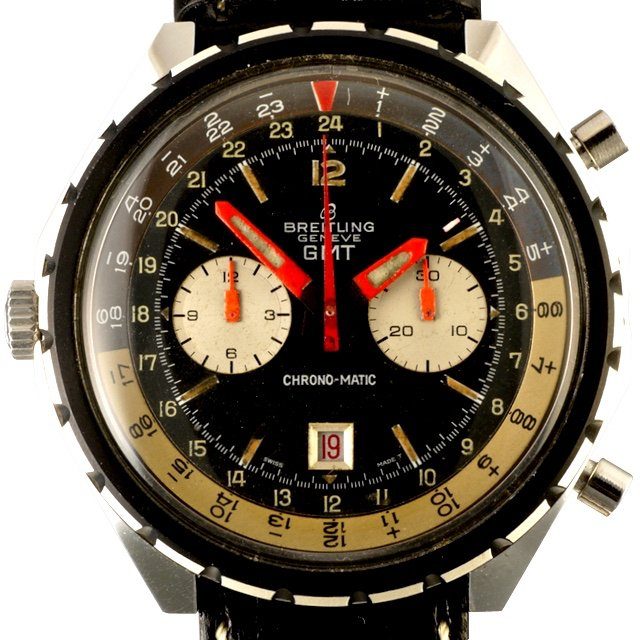
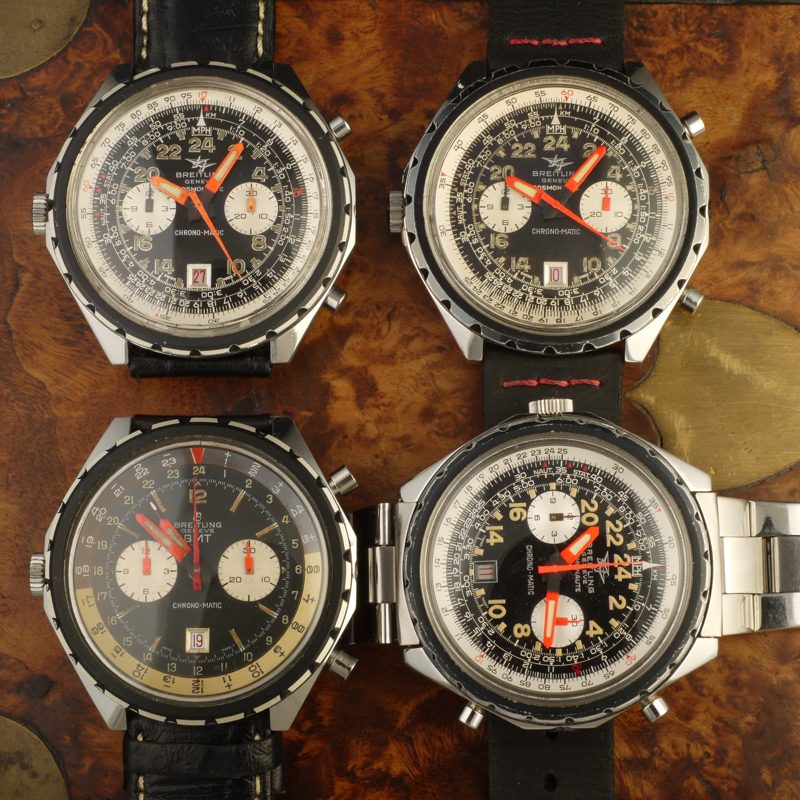
Breitling Chrono-Matic GMT
Bar codes are introduced for retail and industrial use in Englandrare 1970 Breitling Chrono-Matic GMT 2115, it’s a Chrono-matic but I consider it a Cosmonaute because of the 24 hours dial. When watches had slowly started to grow a bit Breitling launches a line of bold, gutsy and unique designs with a diameter of 47mm!
When watches had slowly started to grow a bit Breitling launches a line of bold, gutsy and unique designs with a diameter of 47mm!
This Breitling Chrono-Matic GMT 2115. Automatic movement cal. 12 is based on the Buren 1282 with micro rotor and was not designed to attach a chronograph mechanism. This led to the crown at 9 o’clock. While the el Primero has survived until today, the expensive design made this movement a victim of the quartz boom. Consequently, the number of these watches with the crown on the wrong side is pretty low.
After creating the first self-winding chronograph movement in 1969. The Breitling company invented a whole range of chronographs and named them Chrono-Matic. Featuring an original and distinctive appearance following the 70s trend. The Chrono-matic has a giant case, reflecting that this is a forerunner of extremely large watches.
A Breitling Chrono-Matic GMT 2115 remains near the top of virtually every vintage watch collectors wish list.
Jerry Seinfeld, Graham Hill, Jim Clark, Miles Davis all wear (or wore) a vintage Breitling Navitimer.
The Breitling Navitimer Chosen as the official timepiece of AOPA, Aircraft Owners and Pilots Association. Something which Breitling has traded on ever since.
A 24-hour dial version, the Cosmonaute, was also produced in the early 60s.
The first generation Navitimer 806 came in the early 50s, they had Arabic numerals, black dials and sub-dials.
The second generation shows silver sub-dials and index instead of numbers.
Many early Navitimers didn’t have the Breitling logo, but the AOPA wing on the dial.
Some rare dials show the AOPA wings and the letter B instead of the Breitling logo.
Breitling has been a leading innovator in high quality stopwatches and chronographs and helped define how chronographs look and function until today.
Breitling launched the first wrist chronograph with a pusher at 2:00 in 1915.
Presented in 1933 as the first dual pusher wrist chronograph with pushers at 2:00 and 4:00 o’clock.
Breitling was one of the first manufacturers to recognize the need of early aviators for wrist watches incorporating such devices.
In 1942 Breitling introduced the Chronomat, the worlds first Smart Watch, a chronograph with a rotating logarithmic slide rule that allowed complex calculations with the turn of your fingers.
Throughout the 1930s to 50s, Breitling continued creating chronographs with different scales to suit different professions, such as tachometers for production engineers and drivers, and pulsometersfor doctors.
